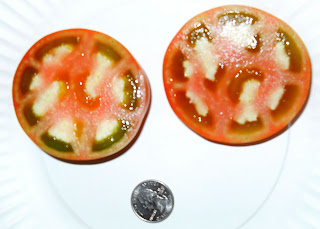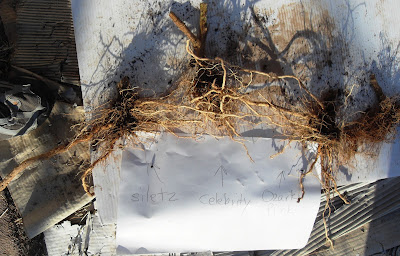 |
| My temporary greenhouse in December |
Creating a temporary greenhouse can be quite rewarding as long as you can keep it sanitary and disease-free. I have only experienced the joy of growing normally warm season produce in the greenhouse once. There was a direct correlation between the growing of that tomato crop and my garden contracting Septoria. So since then I decided to minimize my exposure to disease by putting all my tomato transplants in pots. Though I have been doing well in starting tomatoes I am still experimenting with how to get an early start to my cucumbers. I have almost given up on that though – I can only experiment with winter planting so many times before I need to buy more seed.
Regular cucumbers have a tough time taking any cold. It seems that the slightest frost will wilt a cucumber seedling while tomato plants are a little more forgiving to cool weather.
A good location is a very important factor in determining where to place a greenhouse. A place that faces south and receives a lot of direct sunlight is very important. It also helps if you can position your greenhouse to receive radiant heat from nearby structures. That way your greenhouse area can be more resilient to drops in temperature. My greenhouse consists of a sheet of 5 mil plastic that has been placed diagonally against a south-facing block wall that receives full sun exposure. By placing plastic along the upper part on top of the block wall (with blocks securing the plastic on top) and placing the lower part of the plastic along the garden’s edge (with blocks securing the plastic on the bottom) I am able to secure most of the greenhouse. I can continue securing the plastic on the west perimeter of the garden with blocks though I secure the eastern part of the plastic with a piece of rebarb that is rolled up in the plastic to secure it from the wind because the eastern portion of the garden continues beyond my greenhouse. I made a skeleton of wood pieces that lie diagonally from below the lip of the block wall to the edge of my winter garden. These wood pieces help keep the plastic up and keep it from moving around so much in the advent of a mild winter windstorm. Besides the radiant heat from the south-facing block wall, I place clear plastic bottles inside the greenhouse to soak up the sunlight and keep the temperature within the greenhouse as moderate as possible. Water is very good at moderating temperature, though I find that a clear plastic bottle absorbs heat much better than the opaque plastic bottle does.
 |
| The inside of my greenhouse with waterbottles and tomato transplants in sunken pots. |









